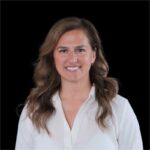Brian First, EVP of Arch Insurance Group, discusses evolution and trends in the group captive insurance market.
You’ve got more than 10 years of experience within the group captive market. What have been the standout changes and evolutions in the use of group captives in that time?
Credit goes to Arch’s founders and executive management for having the vision to include captives as a targeted business over 15 years ago when the company was launched. It’s interesting that back then the main challenge was for well-performing insureds to try and differentiate themselves and avoid the overall broad brush pricing of an abruptly hardening market.
While captives are still utilized to address pricing and capacity concerns, many groups have also strongly embraced the concept of controlling their insurance-related services. An example is implementing tailored best practices in risk management and transparent benchmarking as identified with their peers in the captive.
Many of our transportation captives are reviewing state of the art technology related to collision avoidance and to address distracted driving. As successful group captives mature, we see them looking beyond just dividends to members and putting their surplus to work by investing in extensive risk control seminars and assuming more risk in the captive with more lines of coverage or higher loss retentions.
In your experience, what are the reasons for the continued popularity and success of group captives?
Group captives remain popular and continue to expand faster than the traditional market because they allow upper middle market insureds to experience benefits previously reserved only for larger insureds with the resources to support sophisticated risk management and retention structures. There is a strong allure of being able to positively impact and predict long-term cost of risk, better control services, and achieve group purchasing power/economies of scale typically reserved for larger insureds.
The expansion in this area means that now there are many homogeneous and heterogeneous group captives where interested insureds can evaluate the benefits of joining these existing groups or perhaps start a new one with other quality companies. Arch witnesses the power of these benefits not only in the growth rate of new group captive members, but also in our annual renewal retention rate of 90%.
Where is the growth in Arch’s group captive business coming from? Any particular industries or geographies?
Arch is viewed as one of the group captive industry leaders based on our well-established infrastructure that allows us to provide great service and flexibility to our customers. Arch’s breadth of product and underwriting appetite, consistency and longevity in this area, along with strong financial security differentiate Arch with group captives. As a result, we have developed a very diverse and growing portfolio of group captive customers encompassing nearly every state and class of business.
We are strongly represented in transportation/distribution, construction, retail/wholesale services, light manufacturing and commercial agriculture classes. Depending on the captive, we can offer workers’ compensation, automobile, general and professional liability, property and even umbrella coverages. We have selectively aligned ourselves with the premier captive consultants, production sources and service providers that share our long-term commitment to profitable expansion with group captives.
What will be the main areas of focus and priorities for Arch’s alternative markets division next year?
Group captives represent over 90% of the business in Arch Alternative Markets and we will continue to actively promote their continued success and expansion. This means continuing to collaborate with existing groups on organic growth by identifying and adding quality new insured members and being engaged in their activities throughout the year. We will also be responsive to quoting any risk structure and coverage options they are interested in evaluating compared to current terms.
As an example, we are modelling options to provide $2 million primary GL limits for certain groups and they are interested in taking more risk alongside Arch in the buffer layer above their existing captive retention. Professional development of our team and enhancements to our infrastructure are always important ongoing initiatives that benefit both our colleagues and our customers.






